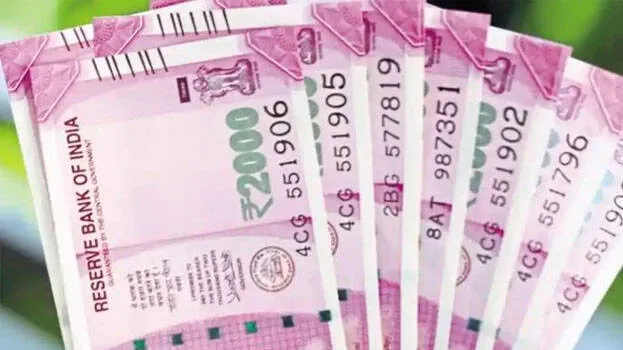

NEW DELHI: Four years ago on this day (November 8, 2016), Prime Minister Narendra Modi appeared on national television and said all Rs 500, Rs 1,000 high value notes will turn invalid by midnight. The announcement at 8 pm— aimed at flushing out money hidden from the taxman, known as black money—led to nearly 86 percent of the currency in circulation becoming invalid by midnight.
Expectedly, mayhem followed. The move, known as demonetisation, caused a lot of hardship for large swathes of people who were forced to form serpentine queues before banks to exchange notes. Several small businesses that were dependent on cash took hard knocks.
There were three main economic objectives of demonetisation—fighting black money, fake notes and creating a cashless economy by pushing digital transactions. Did demonetisation achieve those targets?
Killing black money was the prime target of demonetisation. Black money refers to cash that not is not accounted in the banking system or cash for which tax is not paid to the state.
But what has happened in reality? According to the RBI data, almost the entire chunk of money (more than 99 per cent) that was invalidated came to the banking system. Of the Rs 15.41 lakh crore worth invalidated notes, notes worth Rs 15.31 lakh crore have returned.
In February, 2019, the then finance minister Piyush Goyal told Parliament that Rs 1.3 lakh crore black money has been recovered through all anti-black money measures including demonetisation. Remember, the government had originally expected that at least Rs3-4 lakh crore black money will get extinguished outside the banking system due to demonetisation exercise alone.
Thus, data suggest that demonetization was a failure in unearthing the black money in the system.
Fake notes
Fake notes or counterfeit currency notes was the second big target of Modi’s demonetisation. Take a look at the data available:
In 2016, the year when demonetisation was launched, 6.32 lakh counterfeit pieces were seized across the country. In the next four years (including year 2020 so far), a total of 18. 87 lakh pieces of fake notes have been seized across the country in various denominations, according to the RBI data. During 2019-20, out of the total Fake Indian Currency Notes (FICNs) detected in the banking sector, 4.6 percent were detected at the Reserve Bank and 95.4 percent by other banks.
Most number of fake currency notes seized in the post demonetisation years was in the Rs 100 denominations-1.7 lakh pieces in 2019-20, 2.2 lakhs in 2018-19 and 2.4 lakh pieces in 2017-18. Compared to the previous year, there was an increase of 144.6 percent, 28.7 percent, 151.2 percent and 37.5 percent in counterfeit notes detected in the denominations of Rs10, Rs50, Rs200 and Rs500 [Mahatma Gandhi New Series], respectively, the RBI data showed.
What’s the takeaway here? Counterfeit notes continue to be circulated even now.
Currency In circulation
Creating a cashless economy was pitched as another major target of demonetization in the later period. How has this picked up? Cash has proved that it remains the King in the post note-ban years. Currency in circulation, according to the RBI data, was Rs 24.2 lakh crore from Rs 16.4 lakh crore in 2016, as on March, 2020. Volume of currency notes have increased to 11.6 lakh pieces in 2020 from 9 lakh pieces in 2016.
Sure, digital payments have risen. According to this Financial Express report, UPI payment volume stood highest in FY20 at 1251.86 crore up from 91.52 crore in FY18 among all digital or contactless payment channels. UPI transaction value also went up from Rs 1.09 lakh crore to Rs 21.31 lakh crore during the said period. Total digital payments, in terms of volume, have gone up to 3.4 lakh in 2020 from 70466 in 2016.
Takeaway: People still prefer to deal in cash to a large extent eventhough there is an increase in digital transactions. Question is wouldn’t the digital channels have picked up even without a highly disruptive economic move?
The cost of demonetisation?
While demonetisation imposed short-term costs, there have been important benefits via the above-mentioned increase in direct tax collections as a proportion of GDP, and the sharp, persistent rise in digital payments, said KV Subramanian, chief economic adviser to the government.
“As these represent long-term benefits from greater formalisation, they will continue to accrue in a globalised economy that is undergoing a digitally-enabled Fourth Industrial Revolution,” Subramanian said.
But not all economists agree with this view. Some say demonetisation broke the back of rural economy where cash was dominated and disrupted supply chains. The note-ban impact weighed heavily on the economy. The government, however, has claimed that demonetization has had positive impacts on the economy.
Several studies conducted by international researchers have shown the adverse impact of demonetisation on the Indian economy. Demonetisation lowered the growth rate of economic activity by at least 2 percentage points in the quarter of demonetization, said a working paper entitled ‘Cash and the Economy: Evidence from India’s Demonetisation.’
The debate is still on with respect to the effectiveness of demonetization as a move to attack blackmoney. According to an RTI reply, the RBI’s Board didn’t support demonetization as a measure to counter blackmoney.
In his book, “I do what I do”, former RBI governor, Raghuram Rajan disclosed that he never supported the idea of noteban and felt that short-term impacts of the exercise could outweigh the long term gains.
An analysis of the data reveal that demonetisation has failed to meet its stated goals except in certain areas such as encouraging more digital transactions and more formalisation of the financial system. But the exercise has failed to meet the key objectives, mainly addressing the problem of black money. The pain associated with the exercise has far outweighed the gains.